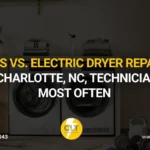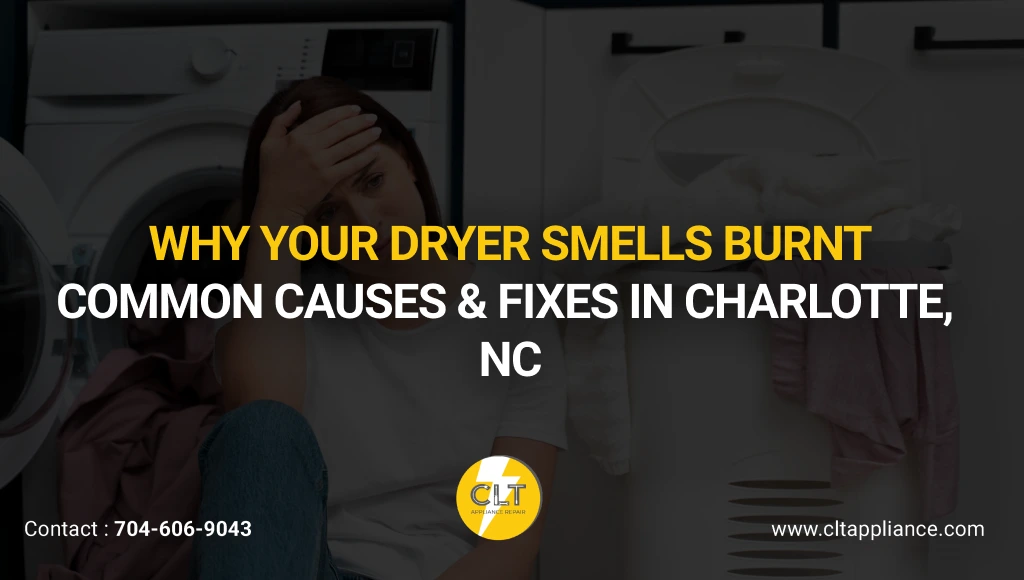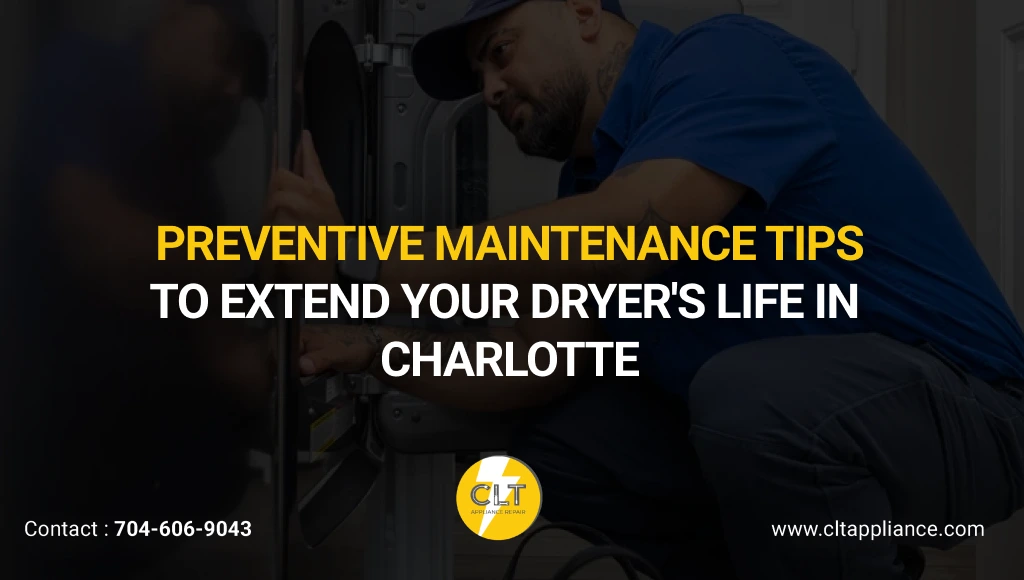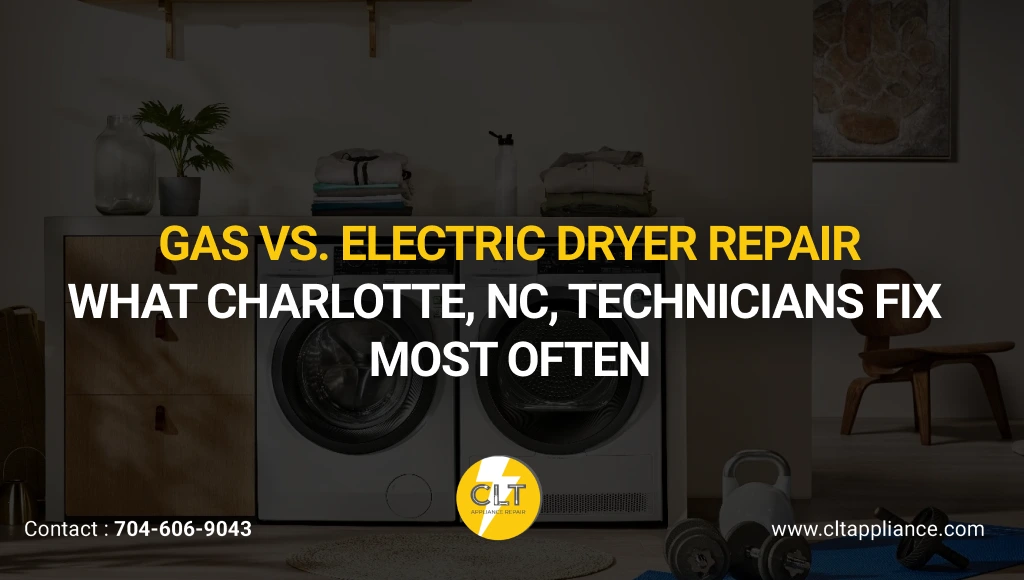Smart best commercial appliance repair practices prevent equipment failures and reduce repair costs. Key strategies include daily maintenance schedules, early problem detection, proper cleaning techniques, qualified technician selection, and making data-driven decisions between repair and replacement. Regular maintenance extends appliance life by 40% while virtually eliminating unexpected downtime.
Reliable appliances keep your business profitable and operational. Equipment failure can cost restaurants $2,500 per hour in lost revenue, while laundromats lose an average of $150 per day in revenue due to broken washers. Implementing the best commercial appliance repair strategies becomes essential for maintaining consistent operations and protecting your investment.
Commercial appliances directly impact your bottom line. A failed refrigerator in a restaurant means spoiled inventory worth thousands. A broken oven during peak hours forces you to turn away customers. These disruptions don’t just cost money but damage your reputation.
Smart businesses invest in prevention rather than react to emergencies. This approach reduces repair costs by 60% and virtually eliminates unexpected downtime. The commercial equipment repair industry reflects this trend, growing from $352.93 billion in 2024 to $381.41 billion in 2025, a 7.3% increase driven by businesses prioritizing proactive maintenance over costly emergency fixes.
Building a Maintenance Schedule for Commercial Appliances
Create maintenance schedules based on manufacturer recommendations and usage intensity. Daily checks prevent minor issues from becoming major problems, while scheduled deep cleaning significantly extends equipment life.
Daily maintenance tasks include:
- Visual inspections for leaks, unusual sounds, or error codes
- Temperature monitoring for refrigeration units
- Cleaning high-touch surfaces and filters
- Checking door seals and gaskets
Weekly tasks focus on deeper cleaning:
- Thorough cleaning of removable parts
- Checking and cleaning ventilation areas
- Inspecting electrical connections
- Testing safety features and alarms
Monthly maintenance involves:
- Deep cleaning of coils and internal components
- Calibrating temperature and pressure settings
- Inspecting and replacing worn seals
- Checking refrigerant levels
Annual professional services should include:
- Comprehensive system diagnostics
- Replacement of wear parts before failure
- Electrical system inspection
- Efficiency testing and optimization
Using Digital Tools for Tracking
Digital maintenance logs provide better tracking than paper systems. Apps like UpKeep or ServiceTitan help schedule tasks, track completion, and identify patterns before problems occur.
Modern tracking systems offer several advantages. They send automatic reminders, store photos of issues, and generate reports showing maintenance history. This documentation proves valuable during warranty claims and helps identify recurring problems.
Consider these features when choosing tracking software:
- Automatic scheduling and reminders
- Photo documentation capabilities
- Integration with your existing systems
- Mobile accessibility for staff
Assigning Responsibilities
Assign daily tasks to front-line staff and technical maintenance to qualified personnel. Clear responsibility assignments prevent important tasks from being overlooked.
Staff responsibilities typically include:
- Daily visual inspections
- Basic cleaning tasks
- Temperature monitoring
- Reporting unusual sounds or odors
Management oversight covers:
- Scheduling professional services
- Tracking maintenance completion
- Budget planning for repairs and replacements
- Training program coordination
Empowering Employees Through Training
Trained employees catch problems early and perform basic maintenance correctly. Companies that follow the best commercial appliance repair practices through proper staff training programs reduce equipment downtime.
Effective training programs teach employees to recognize warning signs, perform routine maintenance safely, and understand when to call professionals. Regular refresher training keeps skills sharp and introduces new techniques.
Focus training on these key areas:
- Safety protocols and procedures
- Basic troubleshooting techniques
- Proper cleaning methods and schedules
- Documentation and reporting requirements
Identifying Common Appliance Issues Early
Warning signs vary by appliance type but generally include unusual noises, temperature fluctuations, increased energy consumption, and error codes. Early detection prevents 75% of major breakdowns.
Refrigerator warning signs:
- Compressor running constantly
- Ice buildup or water leaks
- Temperature inconsistencies
- Unusual noises from the motor or the fans
Oven and range indicators:
- Uneven heating or temperature control issues
- Gas odors or flame color changes
- Door seal damage or poor closure
- Excessive smoke during operation
Washer and dishwasher alerts:
- Water is not draining completely
- Unusual vibrations or movements
- Soap residue remaining after cycles
- Rust or mineral buildup
Tracking Trends and Patterns
Monitor operational data like energy consumption, cycle times, and temperature logs. Sudden changes often indicate developing problems before visible symptoms appear.
Create simple tracking sheets for each appliance. Record daily temperatures, unusual sounds, error codes, and energy readings. This data helps predict failures and optimize maintenance schedules.
Smart business owners know that prevention costs far less than emergency repairs. So get your equipment health assessment and let our certified technicians at CLT Appliance Repair identify hidden issues that could cost you thousands later.
Get In Touch – 704-750-2737
Performing Regular Inspections
Regular inspections catch small issues before they become expensive repairs. The process combines visual assessment with hands-on operational testing to ensure everything functions as it should.
Start with a thorough visual check. Look for cracks, rust, or corrosion on exposed surfaces. Inspect seals and gaskets for any signs of wear or damage. Check all wiring for loose connections or frayed insulation. Don’t forget to examine ventilation areas, as blockages can cause serious performance problems.
Operational testing goes beyond what you can see:
- Run complete cycles while monitoring overall performance
- Test temperature accuracy using calibrated thermometers
- Check water pressure and flow rates against manufacturer specs
- Verify that all safety features and alarms respond correctly
These regular checks help you spot wear patterns and performance changes that signal developing problems. Catching issues early means less downtime and lower repair costs down the road.
Using Operational Data for Predictive Maintenance
Operational data reveals patterns that predict failures weeks before symptoms appear. Energy consumption increases often signal motor problems, while temperature fluctuations indicate cooling system issues.
Modern appliances often have built-in diagnostic capabilities. Learn to read error codes and understand what they indicate about system health. This knowledge helps prioritize repairs and avoid emergencies.
Cleaning and Preventive Maintenance Tips
Your cleaning schedule should match usage intensity. High-volume kitchens need daily deep cleaning to prevent grease buildup, while moderate-use operations can manage with weekly deep cleans.
Common Cleaning Mistakes
Using the wrong cleaning products and techniques causes more damage than normal wear. Harsh chemicals corrode metals, while inadequate cleaning allows buildup that strains systems.
Avoid these common mistakes:
- Using bleach on stainless steel surfaces
- Ignoring the manufacturer’s cleaning instructions
- Allowing water to contact electrical components
- Skipping regular filter replacements
Refrigerator & Freezer Maintenance
Clean condenser coils monthly and check door seals weekly. Dirty coils increase energy consumption by 25%, while damaged seals allow warm air infiltration that overworks compressors.
Coil cleaning process:
- Turn off the power and remove access panels
- Use coil brushes to remove dust and debris
- Vacuum loose particles thoroughly
- Replace panels and restore power
Door seal maintenance:
- Clean seals with a mild soap solution
- Check for cracks or gaps that allow air leaks
- Test seal effectiveness with the dollar bill test
- Replace damaged seals immediately
Managing Airflow and Organization
Proper airflow reduces energy costs by 15% and prevents hot spots that spoil food. Leave space between items and avoid blocking air vents with stored products.
Organization tips for better airflow:
- Keep a 2-inch clearance around air vents
- Store items in proper temperature zones
- Rotate stock using first-in-first-out principles
- Avoid overpacking shelves and compartments
Oven and Range Cleaning Essentials
Daily cleaning prevents grease buildup that causes fires and reduces efficiency. Use manufacturer-approved degreasers and follow proper ventilation procedures during cleaning.
Daily cleaning routine:
- Remove food debris and spills immediately
- Clean cooking surfaces after each use
- Wipe down exterior surfaces and controls
- Empty and clean the grease traps
Weekly deep cleaning involves:
- Remove racks and drip pans for thorough washing
- Clean interior walls with appropriate degreasers
- Check and clean exhaust systems
- Inspect burner assemblies for clogs
Maintaining Oven Door Gaskets
Damaged gaskets allow heat to escape, increasing cooking times and significantly increasing energy costs. Check gaskets weekly and replace them at the first signs of cracking or warping.
Gasket maintenance steps:
- Clean with mild soap and a soft cloth
- Inspect for cracks, tears, or hardening
- Check alignment and sealing effectiveness
- Replace immediately when damage appears
Dishwasher and Washer Upkeep
Clean filters daily and inspect hoses monthly. Clogged filters reduce cleaning effectiveness and strain pumps, while damaged hoses cause water damage and downtime.
Filter maintenance:
- Remove and rinse filters after each shift
- Soak in a cleaning solution weekly
- Replace damaged or worn filters immediately
- Keep spare filters for quick replacement
Hose inspection checklist:
- Look for cracks, bulges, or worn areas
- Check connections for leaks or corrosion
- Ensure proper support to prevent stress
- Replace hoses every 3-5 years preventively
Preventing Mold and Buildup
Leave doors open between uses and run cleaning cycles weekly with appropriate sanitizers. Mold creates health hazards and unpleasant odors that affect customer satisfaction.
Mold prevention strategies:
- Maintain proper ventilation around equipment
- Use hot water cycles regularly to kill bacteria
- Clean rubber seals and hidden areas thoroughly
- Replace worn seals that trap moisture
Small Appliance and Specialty Equipment Care
Small appliances need daily cleaning and weekly deep maintenance. Coffee makers require descaling every 2-4 weeks, while ice machines need sanitization cycles monthly.
Coffee maker maintenance:
- Clean brew baskets and carafes daily
- Descale with manufacturer-approved solutions
- Replace water filters according to schedule
- Clean exterior surfaces and control panels
Ice machine care:
- Clean ice bins and scoops daily
- Run sanitization cycles monthly
- Replace water filters regularly
- Keep air vents clear and clean
Microwave maintenance:
- Clean the interior after each shift
- Check door seals for damage
- Test temperature accuracy monthly
- Replace worn turntables and supports
If you want to transform your maintenance routine from reactive to proactive, schedule your professional maintenance service and join hundreds of businesses that have eliminated unexpected breakdowns through proper care.
Schedule Maintenance Service – 704-750-2737
Proper Handling and Replacement of Appliance Parts
Parts replacement is about understanding how each piece works within the larger system and making strategic decisions that protect your entire operation. Every component in your commercial appliance serves a specific purpose, and neglecting even the smallest part creates a domino effect of failures. Understanding this interconnected nature helps you prioritize parts maintenance effectively.
Critical Parts That Demand Regular Attention
Different parts require different maintenance intervals based on their function and wear patterns.
High-priority replacement items:
- Door gaskets and seals: Check weekly, replace every 6-12 months or at the first sign of cracking
- Air filters: Clean daily for high-volume operations, replace monthly or per manufacturer specs
- Water filters: Replace every 3-6 months to prevent mineral buildup and contamination
- Ignitors and heating elements: Inspect quarterly, replace when performance degrades
- Drive belts and motors: Check monthly for wear, tension, and unusual vibrations
Medium-priority components:
- Thermostats and temperature sensors
- Drain valves and hose connections
- Burner assemblies and gas valves
- Control knobs and switches
- Internal lighting and display panels
Regular inspection prevents the surprise factor. When you know a part is approaching its service life, you can plan replacement during slow periods rather than scrambling during peak hours.
The OEM vs. Aftermarket Parts Decision
This choice significantly impacts your equipment’s performance, longevity, and your bottom line over time.
Original Equipment Manufacturer (OEM) parts offer:
Guaranteed compatibility means parts fit perfectly without modification or adjustment. These components meet the exact specifications your equipment was designed around. Manufacturer warranties remain valid when you use OEM replacements. Most warranties become void with aftermarket parts.
Quality control ensures consistent performance batch after batch. OEM parts often include design improvements based on field experience with older versions. While the initial cost runs 20-40% higher than aftermarket alternatives, the extended lifespan typically makes them more economical long-term.
When aftermarket parts make sense:
Older equipment with discontinued OEM components may require quality aftermarket alternatives. Emergencies where OEM parts aren’t immediately available sometimes justify temporary aftermarket solutions. Non-critical cosmetic components like knobs or panels don’t always require OEM specifications.
Budget constraints on equipment nearing end-of-life can make aftermarket parts reasonable for keeping systems operational until replacement. However, always verify the supplier’s reputation and component quality before installation.
How Parts Maintenance Protects Your Investment?
The relationship between parts care and equipment longevity is direct and measurable. Regular parts replacement extends appliance life compared to run-to-failure approaches.
Warranty protection matters:
Most commercial appliance warranties require documented maintenance using approved parts. That $50 savings on an aftermarket part could cost you $3,000 in denied warranty claims later. Keep detailed records including part numbers, installation dates, technician credentials, and OEM compliance receipts.
Cost efficiency through planning:
Scheduled parts replacement costs 60-70% less than emergency repairs. Create a replacement calendar based on manufacturer recommendations and your usage patterns. Set reminders 30 days before parts are due for replacement.
Hiring Qualified Technicians and Using Quality Parts
Look for EPA certification, manufacturer training certificates, and relevant trade licenses. Qualified technicians prevent recurring problems and ensure repairs meet safety standards. Choosing technicians with proper certifications (EPA 608, NATE, and manufacturer training) ensures your repairs meet safety standards, protect warranties, and prevent repeat failures.
Essential certifications include:
- EPA Section 608 for refrigeration work
- NATE certification for HVAC systems
- Manufacturer-specific training certificates
- State electrical or plumbing licenses when required
Experience indicators:
- Minimum 3-5 years in commercial appliance repair
- References from similar businesses
- Ability to work on your specific equipment brands
- Emergency service availability
Choosing Quality Replacement Parts
OEM parts remain the safest choice for critical components because they ensure proper fit, maintain warranties, and match your equipment’s original performance specs. Use aftermarket parts only for cosmetic parts or when OEM parts are unavailable.
OEM parts offer guaranteed compatibility and maintain manufacturer warranties that protect your investment. These components meet original performance specifications and often include improved designs from recent updates. The higher upfront cost pays off through longer lifespan and reliable operation. Your equipment performs as intended when you use parts designed specifically for your model.
Aftermarket parts make sense for older equipment with discontinued OEM components or during emergency repairs. Budget constraints on aging appliances may justify quality aftermarket alternatives for non-critical components. However, verify the aftermarket supplier’s reputation and component quality before installation.
Building Vendor and Service Relationships
Choose service partners based on response time, expertise, and reputation rather than the lowest price. Reliable partners prevent emergencies and provide priority service during peak seasons.
Evaluation criteria:
- Average response time for emergency calls
- Inventory of common parts for your equipment
- Training on your specific appliance brands
- Customer references from similar businesses
Benefits of Service Contracts
Service contracts typically reduce total repair costs while providing predictable budgeting. They also ensure priority service and often include discounted parts.
- Cost Savings: Lower repair rates and discounted parts reduce overall expenses
- Priority Response: Guaranteed faster service during peak seasons and emergencies
- Predictable Budgeting: Fixed monthly costs eliminate surprise repair bills
- Preventive Maintenance: Regular inspections catch problems before expensive breakdowns
- Extended Equipment Life: Professional care extends appliance lifespan by years
- Warranty Protection: Maintained coverage keeps manufacturer warranties valid
Safety and Compliance in the Workplace
OSHA regulations require proper lockout/tagout procedures, electrical safety protocols, and hazardous material handling. Local health departments also mandate specific cleaning and maintenance standards.
Key Safety Requirements:
- Lockout/tagout procedures for electrical work
- Personal protective equipment for maintenance tasks
- Proper ventilation during chemical cleaning
- Regular safety training for maintenance staff
Compliance Documentation
Keep detailed maintenance logs with dates and signatures for every service performed. Maintain safety training records for all staff members handling equipment. Store inspection reports from qualified technicians and keep them accessible for audits. Document all chemical usage with current safety data sheets and handling procedures. These records protect your business legally and demonstrate your commitment to workplace safety.
Keeping Up with Regulations
Subscribe to industry publications, join professional associations, and maintain relationships with regulatory agencies. Regulations change frequently, and compliance failures result in fines and closure orders.
Staying informed through:
- Professional trade associations
- Local health department newsletters
- Equipment manufacturer updates
- Industry training programs and seminars
Documentation Requirements
Most jurisdictions require maintenance logs, inspection records, and repair documentation. These records prove compliance during inspections and support warranty claims.
Essential documentation includes:
- Daily maintenance checklists with signatures
- Professional service records with technician credentials
- Parts replacement logs with serial numbers
- Temperature and performance monitoring records
When to Repair vs. Replace Your Appliance
For commercial operations, repair typically makes more business sense than replacement due to downtime costs and installation delays. When evaluating options, consider that replacement involves 2-4 weeks of lead time, installation costs adding 20-30% to the unit price, and lost revenue during downtime that often exceeds the repair cost itself. A $1,200 repair completed within 24 hours usually costs less than weeks of operational disruption.
Repair makes sense when:
- Your business can’t afford operational downtime
- Equipment is critical to daily operations (refrigeration, cooking equipment, washing machines)
- Repair can be completed within 24-48 hours
- Parts are readily available from your service provider
- No pattern of recurring problems exists
- Typical commercial repairs range from $700-$1,500, depending on complexity
Replacement is better when:
- Equipment has chronic recurring failures affecting operations
- You can afford 2-4 weeks of downtime or have backup equipment
- The unit is beyond its expected lifespan (15+ years for commercial equipment)
- Energy efficiency improvements will offset the total replacement cost (unit price + 20-30% installation + removal fees) within 2-3 years
- Technology advances provide critical operational benefits that your current equipment can’t deliver
Cost-Benefit Analysis for Major Repairs
Include ongoing operating costs, not just initial repair prices. Older equipment consumes more energy and requires more frequent service, making the total cost of ownership higher than replacement.
Cost comparison factors:
When evaluating major repairs, compare upfront costs against replacement price while considering remaining equipment life and energy consumption differences. For example, consider a commercial refrigerator needing a $1,200 compressor repair. The repair is completed in 24 hours with minimal downtime. Replacement would cost $4,500 for the unit, plus $1,200 for installation and old unit removal (total $5,700), plus 2-3 weeks of either renting temporary refrigeration at $500/week or losing perishable inventory daily. The repair saves you over $5,000 in immediate costs and keeps your business operating without interruption.
Return on investment calculations:
For commercial operations, repair often provides better immediate ROI than replacement. A properly executed repair restores your equipment to full functionality within 24-48 hours for $700-$1,500. Compare this to replacement costs: $4,000-$8,000 for the unit, plus $1,000-$2,000 installation, plus lost revenue during 2-4 weeks of downtime. Even if you need repairs twice within a year, you’re still ahead financially compared to the disruption and total cost of replacement. Replacement makes sense for equipment requiring constant monthly repairs or when you can schedule installation during planned downtime.
Evaluating Technology and Efficiency
New technology often provides 20-40% energy savings plus improved performance features. Smart controls, better insulation, and efficient motors quickly offset higher initial costs.
Technology advantages to consider:
- Energy efficiency improvements
- Smart monitoring and diagnostic capabilities
- Improved safety features and compliance
- Enhanced performance and reliability
Efficiency evaluation factors:
- Current energy consumption vs. new equipment ratings
- Available utility rebates for energy-efficient equipment
- Operational improvements from advanced features
- Long-term maintenance cost reductions
Bottom Line
Running a business means juggling countless priorities, but your commercial appliances shouldn’t keep you awake at night. The best commercial appliance repair strategies we’ve covered are your insurance policy against the chaos of unexpected breakdowns. Start small if you need to. Pick one appliance, create a simple maintenance schedule, and watch how quickly problems become predictable and manageable instead of surprising and expensive.
CLT Appliance Repair has revolutionized how businesses approach commercial appliance maintenance. Our certified technicians have prevented over 1,000 emergency breakdowns across the region, saving clients millions in downtime costs. Every service call includes a complete system assessment, predictive maintenance recommendations, and detailed documentation that keeps you compliant and prepared.
Your success is our success. When your equipment runs smoothly, you can focus on running your business. That’s the kind of partnership that matters!
FAQs
How often should commercial appliances be serviced or inspected?
Daily visual inspections by staff, weekly deep cleaning, monthly technical checks, and annual professional services provide optimal maintenance. High-volume operations may need more frequent professional attention.
What certifications or qualifications should a commercial appliance repair technician have?
Technicians should have EPA Section 608 certification, manufacturer training certificates, relevant state licenses, and a minimum of 3-5 years of commercial experience with your equipment brands.
How do I avoid unnecessary downtime when scheduling appliance repairs?
Schedule maintenance during slow periods, maintain spare parts inventory, use service contracts for priority response, and implement predictive maintenance to address issues before failure.
Is it normal for a repair service to request payment in advance?
Reputable services typically require payment after completion. However, advance payment may be requested for expensive parts orders or emergency after-hours service calls.
Author

- John Bennett
- John Bennett is a seasoned appliance repair specialist at CLT Appliance Repair, where he brings over a decade of technical expertise and a strong commitment to customer satisfaction. With a background in electrical and mechanical systems, John has built a reputation for reliable, efficient, and honest repair services across a wide range of household appliances-including refrigerators, washing machines, ovens, and more.
Latest entries
News11/19/2025Why Your Dryer Smells Burnt: Common Causes & Fixes in Charlotte, NC
News11/19/2025Preventive Maintenance Tips to Extend Your Dryer’s Life in Charlotte
News11/18/2025Gas vs. Electric Dryer Repair: What Charlotte, NC, Technicians Fix Most Often
News11/18/2025Top 5 Signs Your Dryer Needs Professional Repair in Charlotte, NC









